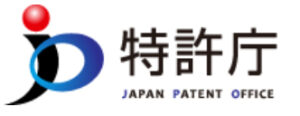Overview of equal infringement
The validity of a patent right is determined based on the description of the scope of claims (Patent Law, Article 70, Paragraph 1).
If the target product contains all the components of the claims, it is an infringement of the patent right, and if it does not contain even one of the components of the claims of the claims. Is non-infringement.
Equal infringement is an infringement of a patent right if the product can be evaluated as equal even if it does not include all the components of the claims in the claims. It is a way of thinking.
Requirements to which the doctrine of equivalents applies
When there is a part in the configuration described in the claims that differs from the product to be judged.
1. The difference is not an essential part of the patented invention (non-essential part)
2. Even if the difference is replaced with that of the product, the object of the patented invention can be achieved and the same action and effect can be obtained (substitutable).
3. At the time of manufacture of the product, those skilled in the art could easily conceive such a replacement (ease of replacement).
4. The product is not the same as the publicly known technology at the time of filing the patent application of the patented invention, and a person skilled in the art cannot easily infer from the known technology at the time of filing (difficulty in inferring easily).
5. There are no special circumstances such as the product being intentionally excluded from the scope of claims in the patent application procedure for the invention (conscious exclusion).
If the target product meets all of the above requirements 1 to 5, it will be judged as infringement of the patent right (equal infringement) as equivalent to the configuration described in the claims (February 24, 1998). Supreme Court decision (ball spline case)).
The burden of proof of requirements 1 to 3 lies with the patentee, and the burden of proof of requirements 4 and 5 is the defendant's reason for defense.
The judgment time of Requirement 3 is "at the time of implementation", and the judgment time of Requirement 4 is "at the time of filing".
Excerpt from the Supreme Court case in the Ballspline case
When filing a patent application, it is extremely difficult to describe the scope of claims in the specification in anticipation of all future aspects of infringement.
If the other party can easily avoid the exercise of rights such as injunction by the patentee by replacing a part of the configuration described in the claims with substances, technologies, etc. that became clear after filing the patent application. Not only is it against the purpose of the Patent Law, which is to reduce the willingness of society in general to invent, and to contribute to the development of industry through the protection and encouragement of inventions, but it is also against social justice and the idea of equality. Become.
The substantive value of the patented invention extends to the technology that a third party can easily conceive from the configuration described in the claims as being substantially identical to this, which the third party should expect. It is reasonable to understand that.
No one should have been able to obtain a patent for the technology that was known at the time of filing the patent application for the patented invention and the technology that could be easily inferred by those skilled in the art at the time of filing the right application. (Refer to Article 29 of the Patent Act), it cannot be said that it belongs to the technical scope of the patented invention.
The patentee once approves that it does not belong to the technical scope of the patented invention, such as the applicant consciously excluding it from the scope of claims in the patent application procedure, or it is externally understood as such. It is not permissible in the light of the doctrine of prohibition that the patentee later makes a counter-argument about something that has acted in such a way.
Explanation of equal infringement
Equal infringement is not stipulated by patent law.
It is a standard for patent infringement decided by the Supreme Court in the ball spline case.
As mentioned above, the validity of a patent right is determined based on the description of the scope of claims (Patent Law, Article 70, Paragraph 1).
However, if this is strictly applied, if the target product is slightly different from one of the components of the claims, it will be non-infringement and the specific validity cannot be guaranteed. It was determined to be an infringement.










